#Norse history
Text

My sweet Goddess. ❤️
#norse#norse deities#norse history#norse loki#norse polytheism#norse aesthetic#norse gods#sigyn deity#sigyn worship#loki x sigyn#sigyn#paganblr
69 notes
·
View notes
Text
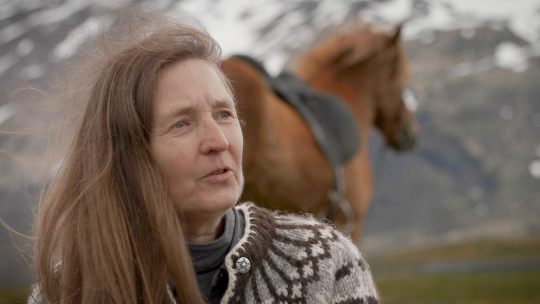
Viking historian Nancy Marie Brown’s new book, The Real Valkyrie: The Hidden History of Viking Warrior Women, explores what life might have been like for the warrior woman of Bj 581. Using more evidence from the recent tests conducted on the remains, Brown traces her journey from Norway to the British Isles to Kiev then, finally, to Birka. Brown imagines the unnamed warrior meeting other prominent Viking women, such as Gunnhild, Mother of Kings, or Queen Olga, ruler of the Rus Vikings in Kiev. She also explores the Viking sagas and contemporary sources with a new lens.
Atlas Obscura spoke with Brown about her new book, valkyries, and the assumptions that underlie the history we think we know.
How did you initially get interested in Vikings—and female Vikings in particular?
When I went to college, I actually wanted to study fantasy writing and, you know, learn to write like Tolkien. I learned very quickly that that was not appropriate for an English major in the 1970s, so I decided to study what Tolkien studied, and he was a professor at Oxford University, teaching Old English and Old Norse. So I started reading all of the Icelandic sagas that I could find in translation. And when I ran out of the English versions, I learned Old Norse so that I could read the rest of them.
One of the things I liked about [the sagas] the most was that they had really interesting women characters. There’s a queen in Norway who appears in about 11 sagas, Queen Gunnhild, Mother of Kings. She led armies. She devised war strategy. And then I was looking at the valkyries and the shieldmaids and thinking, you know, these are really interesting people that have always been considered to be mythological.
So when I learned in 2017 that one of the most famous Viking warrior burials turned out to be the burial of a woman, that just absolutely dazzled my imagination.
Is this the first confirmed grave of a female warrior that we have?
This is the one that has the best proof. There are one or two others that have since been DNA tested and proven to be female. But in each of these cases, it’s hard to say if the person in the grave, whether male or female, actually was a warrior, or if the object that we are interpreting as a weapon was used for hunting or for some other purpose.
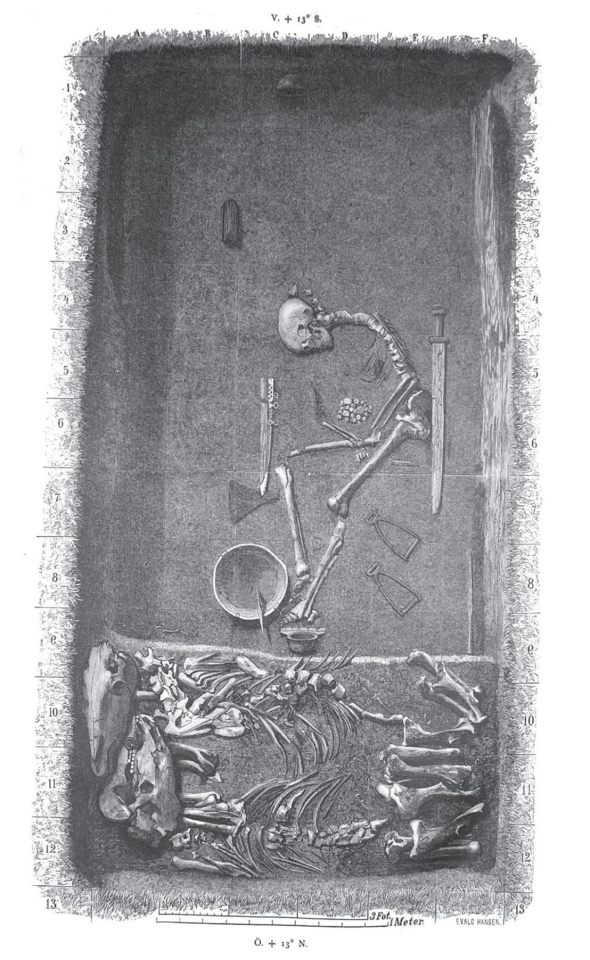
What do we know about the life of the Viking warrior woman in Bj 581?
In 2017, by testing her bones and her teeth, [scholars] could say she was between 30 and 40 years old when she died. They could also tell that she ate well all of her life. So she came from a rich family or maybe even a royal one. She was also quite tall, about 5’7”. By the minerals in her inner teeth, [scholars can determine] she may have come from southern Sweden or Norway, and also that she went west maybe as far as the British Isles before her molars finished forming. She didn’t arrive in Birka until she was 16.
We also have her weapons and a little bit of clothing that were found in the grave. And these link her to what is known as the Vikings’ East Way, which was the trade route from Sweden to the Silk Road.
We can link, through the artifacts and through the bones, that she could have traveled from as far west as Dublin to as far east as at least Kiev in the 30 to 40 years of her life.
How do we know that there were Viking warrior women?
They are mentioned many, many, many times in the literature. In most cases, they have been dismissed as mythological because, of course, we know warriors were men. But we don’t know that. That is an assumption that is based on traditional Victorian ideas that because women are mothers, they’re nurturing, they’re peacemakers, and they don’t fight.
That’s not historically true. Women have always fought. And they appear in most cultures until the 1800s, when Viking studies and archaeology pretty much started. So we sort of have this problem of bias in our earliest textbooks.

There’s this assumption that the warrior men of myth must have been based on real people, but it’s not the same for the mythical warrior women. Why is that?
It’s just an assumption based on what people think women are like. Most of the material we have from the Middle Ages was written by men, and most of the material we have until the 1950s was written by men, and women are slowly making their way into the field of Viking scholarship. But many of them are still working under the assumptions that they were taught.
I noticed when I went back and reread some of the sagas in Icelandic that there wasn’t this clear distinction between the warrior women being mythological and the warrior men being human. When you actually look at the old Norse text, there’s a lot of words that have been translated as “men” that actually mean “people,” but it’s always been translated as “men” because it’s a warrior situation.

Is it possible for historians to remove all of those biases?
No, I don’t think it is. I think we all are looking through our own lenses. But we have to revisit those sources every generation to see past biases. So when you have layer after layer after layer of removing biases, you may get closer to the truth.
What most surprised you in the course of researching your book?
One of the controversies right now in Viking studies is should we really be talking about men and women at all? Maybe there were all kinds of different genders. We don’t know if there were more than two genders in the Viking age. Maybe it was a spectrum.
If you look at this one group of sagas called the Sagas of Ancient Times that are often overlooked because they have all these fabulous creatures in them, like dragons and warrior women. It’s really interesting [because] these girls grow up wanting to be warriors. They’re constantly disobeying and trying to run off and join Viking bands. But when they do run off and join the Viking band, or, in another case, become the king of a town, they insist on being called by a male name and use male pronouns.
So it was very shocking to me to go back and read it in the original and say, “Wow, all this richness was lost in the translation.”
#Nancy Marie Brown#vikings#history#women in history#archaeology#women warriors#warfare#warrior women#norse history#atlas obscura
362 notes
·
View notes
Text


SAM CORLETT as LEIF ERIKSON
Vikings: Valhalla (2022-)
Leif Erikson, also known as Leif the Lucky (c. 970 – c. 1019 to 1025), was a Norse explorer who is thought to have been the first European to have set foot on continental North America, approximately half a millennium before Christopher Columbus.
#vikings: valhalla#vikings: valhalla season 2#vikings valhalla#sam corlett#vikings#vikings edit#vikings gifs#harald sigurdsson#freydis eriksdotter#leo suter#frida gustavsson#norse history#tvedit#tvgifs#gifset#Netflix#dailynetflix#leif eriksson#leif erikson
121 notes
·
View notes
Photo
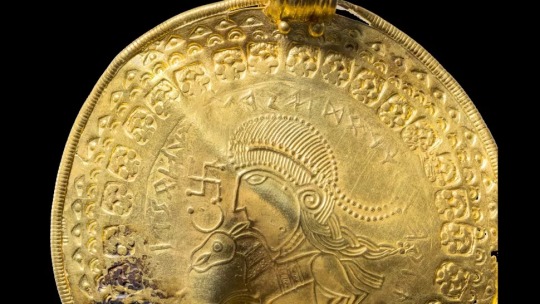

Earliest Mention of Odin 'King of the Gods' Found in Treasure Hoard From Denmark
The oldest known inscription mentioning the Norse god Odin has been found on a gold pendant in Denmark from the fifth century A.D.
A gold pendant recently unearthed in Denmark bears the earliest known inscription featuring the Norse god Odin.
Archaeologists think the pendant — which is technically known as a bracteate and made of thin, stamped gold — dates to the fifth century A.D., making it 150 years older than the previous oldest known artifact mentioning Norse mythology.
"It is the first time in the history of the world that Odin's name was mentioned," Lisbeth Imer (opens in new tab), a runologist and writing expert at the National Museum of Denmark, "This means that Norse mythology can now be dated all the way back to the early fifth century."


The inscription, in letters called runes, says, "He is Odin's man" and the name "Jaga" or "Jagaz" in an early form of the Norse language. It is thought to refer to its owner, an Iron Age chieftain or king, who may have claimed the god as an ancestor.
"I think that the wording refers to the central motif depicting a man with a horse, portraying the local magnate or king, who presents himself a descendant of the king of gods and the god of kings, Odin," Imer said. "We have other literary evidence that the kings liked to present themselves as descendants of gods."

Imer and her colleague, linguist Krister Vasshus (opens in new tab), spent more than a year deciphering the runic inscription on the bracteate, which was part of a stunning gold hoard unearthed in Jutland, Denmark, in 2021. The trove contained almost 2.2 pounds (1 kilogram) of gold and is now known as the "Vindelev hoard" after a nearby town.
Norse Gods

In Norse mythology, Odin was the king of the gods; the god of death, wisdom, magic and runes; and the "All-father" of both gods and mortals. Although the Norse pantheon featured dozens of deities, Odin was one of the three main gods worshipped in the Norse religion, alongside Thor and Frey.
Odin is often portrayed with only one eye, because according to legend, he gouged out his other eye to gain incomparable knowledge. He is also the Norse form of the Germanic god Wotan and the Anglo-Saxon god Woden, although they both seem to have had two eyes.

Imer said the runic inscription seemed to be more weathered than the rest of the pendant, possibly because it was a holy inscription that was touched to "gain power."
"It was a time when religion was more integrated into daily life," she said in an email. "The leaders of society were responsible for cultic activities and performing rituals to uphold a good relationship with the gods."
It's difficult to interpret the tiny runes, however, because the words run into one another without spaces and because the name "Odin" is spelled as "Wodnas" and not in the regular form "Wodinas" — possibly because it is written in an early form of Norse called Proto-Norse, Imer said.
Proto-Vikings

Archaeologists think the Norse descended from North Germanic peoples who migrated into Denmark and other Scandinavian countries from about the fourth to the first centuries B.C. After the eighth century A.D., the seafarers among them became famous as Viking raiders in Europe; they established colonies in parts of Britain, France, Iceland and Greenland for a time. Some Vikings even made it to the Faroe Islands and Newfoundland in what's now Canada.
The Vindelev hoard, however, comes from a "proto-Viking" age before the Norse were known (and feared) as Vikings.
The inscription's discovery has already influenced the interpretation of inscriptions on other gold bracteates; more than 1,000 have been found around northern Europe, and more than 200 of them have inscriptions.
"The inscription on the Odin bracteate is actually copied onto one of the other bracteates from Vindelev with a slightly different motif," Imer said. "But the carver who copied the inscription misunderstood the wording, so in many places he just carved some haphazard strokes and lines."
It also seems that the copied bracteate was stamped from the same die as another found in 1852 on the Danish island of Funen and given to the National Museum, although its inscription was never deciphered.
"So, the National Museum has been in possession of an inscription with the word Odin on it for 170 years — but we didn't know until recently," Imer said.
By Tom Metcalfe.
#Earliest Mention of Odin 'King of the Gods' Found in Treasure Hoard From Denmark#vindelev hoard#metal detector#metal detecting finds#treasure#gold#gold jewelry#ancient artifacts#archeology#archeolgst#history#history news#ancient history#ancient culture#ancient civilizations#norse history#long reads
64 notes
·
View notes
Text
the book i'm reading on ancient norse mythology/culture: "cross dressing was very frowned upon in old norse society"
also in the the book i'm reading on ancient norse mythology/culture: *numerous stories of gods crossdressing any chance they get*
8 notes
·
View notes
Text

So I wanted to make a visual timeline of just the runic alphabets for my own personal reference—so I could see when each alphabet was used and for how long and such.
But I got carried away.
261 notes
·
View notes
Text
"In a literal sense, the Vikings are of course people of the past, dead and gone—but at the same time they inhabit a curiously haptic kind of prehistory, one that appears to return whatever pressure is applied to it. Many have been tempted to put their fingers on the scales of hindsight and imagined that the impulse to do so came not from themselves but through the revelation of hidden truths buried by time. Medieval monks and scholars reinvented their pagan ancestors either as nobly misguided forebears or as agents of the devil. In the manuscript illuminations of Romance literature, with a kind of Orientalist prejudice, they became Saracens, enemies of Christ depicted with turbans and scimitars. In Shakespeare’s England, the Vikings were taken up as violent catalysts in the early story of the kingdom’s greatness. Rediscovered during the Enlightenment as a sort of ‘noble savage’, the figure of the Viking was enthusiastically adopted by the nationalist Romantics of the eighteenth and nineteenth centuries. Searching for their own emerging identities, Victorian imperialists scoured Scandinavian literature looking for suitably assertive northern role models, expressing the manifest destiny of the Anglo-Saxons through their Nordic cousins. The logical end of that trajectory came a century later, when the Nazis appropriated the Vikings in pursuit of their racist fictions, elevating them as a spurious Aryan archetype; their modern successors still plague us today. Elements of the broad Pagan community now seek a spiritual alternative that draws inspiration from Viking religion, with Tolkienesque flavourings added to a cloudier Old Norse brew. All these and many more, including today’s academics and the audiences for historical drama, have taken the fragmentary material and textual remains of the Vikings and recast them in moulds of their choosing. At times it can seem that the actual people have almost disappeared under the cumulative freight they have been made to bear."
- Neil Price, “Children of Ash and Elm: A History of the Vikings”
#history#norse history#vikings#viking age#viking history#neil price#children of ash and elm#this was a phenomenally detailed and comprehensive book#queue#mine
42 notes
·
View notes
Text
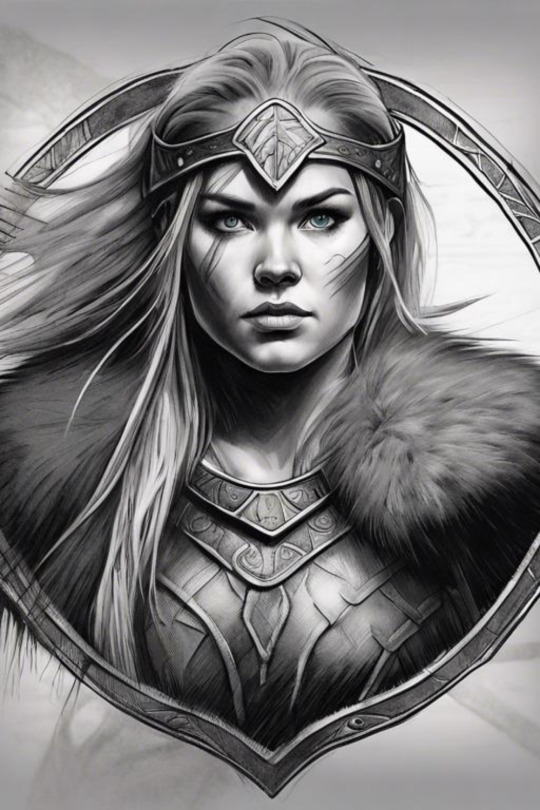
Shield Maiden, Norse.
#shield maiden#warriors#norse warriors#odin#norse history#powerful woman#alteredai#norse art#pagans of tumblr
9 notes
·
View notes
Photo



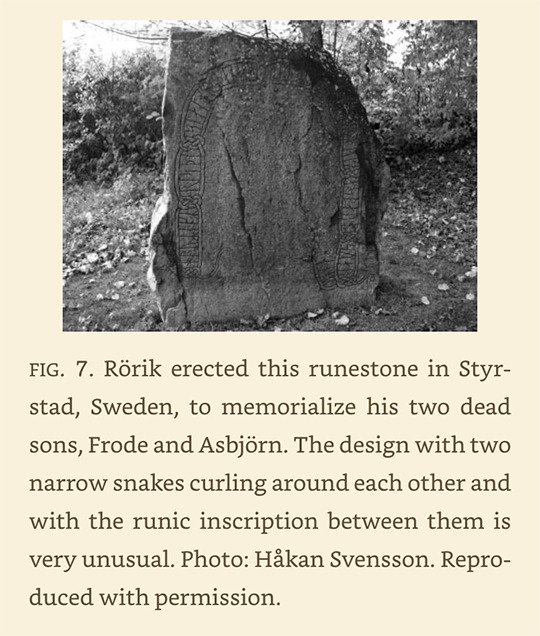

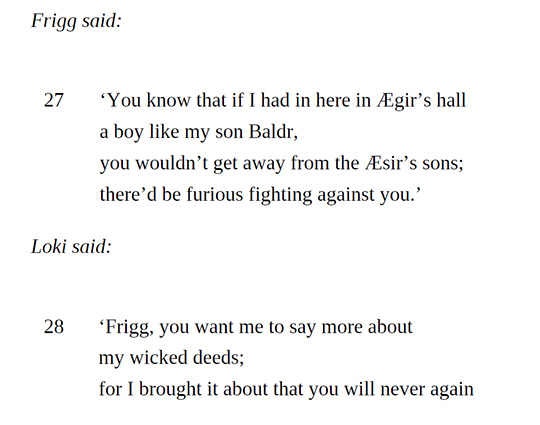
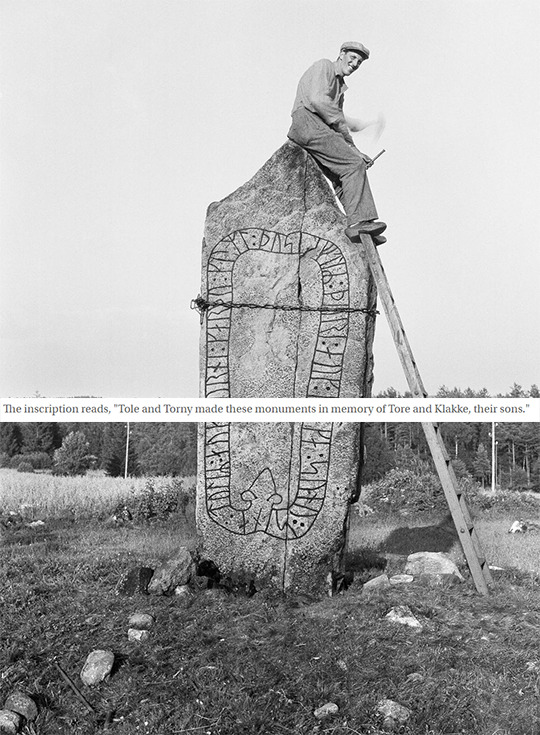

Frigg’s grief + Ancient Norse runestones memorializing sons.
The Poetic Edda translated by Carolyne Larrington, The Age of the Vikings by Anders Winroth, The Prose Edda by Snorri Sturluson and translated by Arthur Gilchrist Brodeur, a collection of Runestones with images from the Swedish National Heritage Board
#norse mythology#mythology#viking age#norse history#ancient norse#history#frigg#frigga#baldr#baldur#web weaves#runestones#grief#death cw
76 notes
·
View notes
Text
I have completely overhauled the history page to make it a super extensive timeline of how modern Norse Heathenry developed, especially in North America. Now each item has its own entry!
173 notes
·
View notes
Text

Praise be to Loki. ❤️
#norse#norse aesthetic#norse deities#norse history#norse loki#norse polytheism#norse runes#norse witch#old norse#loki laufeyson#loki#norse paganism#norse gods#norse heathen#norse mythology#norse pantheon#Norse pagan
64 notes
·
View notes
Text
Viking Age
-- lasted from 793 to 1066 CE
-- starts with the raid on Lindisfarne
-- ends with the Norman invasion of England
.
Patreon
#studyblr#notes#my notes#history#historyblr#world history#viking history#viking age#scandinavia#scandinavian history#vikings#viking notes#norse#norse history#norse mythology#norse myths#viking mythology#viking myths#iceland#icelandic history#sweden#swedish history#european history#denmark#danish history#viking life#icelandic settlements#viking archaeology#scandinavian archaeology#archaeology
5 notes
·
View notes
Text
#greenland#norse history#super interesting#although at the end when it says europeans could have never adapted to inuit life to survive i'm :////#i keep seeing it mentioned elsewhere that centuries after the norse settlement was abandoned they found the body of a norse person#in a inuit-style seal skin in greenland#so i'm sure not all of them#but a few maybe#and there is evidence of some european settlers in n. america going to live in indigenous communities from time to time especially early on#i feel like that creates this implication that living like that is too uncivilized compared to european way of life that it wouldn't have#even been thinkable...#:(
2 notes
·
View notes
Video
youtube
What Do We REALLY Know About Viking Women?
1 note
·
View note
Text
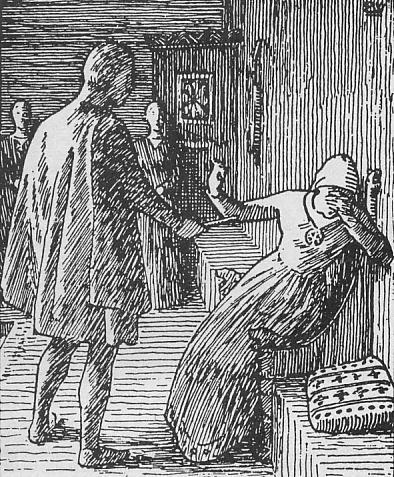
Tyra of Denmark was a 10th-century Danish princess. She was the spouse of both King Olav I of Norway and of Styrbjörn Starke, prince of Sweden.
Tyra was daughter of the Danish king Harald Bluetooth and thus a sister to King Sweyn Forkbeard. She was first married to the Swedish prince and throne claimant Styrbjörn Starke (Styrbjörn the Strong), son of King Olof Björnsson. However Styrbjörn Starke died in the Battle of Fýrisvellir (986) near Uppsala fighting with his uncle King Eric the Victorious for the throne of Sweden.
According to Snorri Sturluson, she was next betrothed to the Wendish king Burislav, as part of a Danish-Wendic peace agreement negotiated by King Sweyn Forkbeard. As part of the agreement, Sweyn married Gunhild of Wenden who was the sister of Burislav. However, after her hunger strike, Burislav sent her back to Denmark.
She subsequently arranged to have herself married to Olaf Tryggvason, King of Norway, to the displeasure of her brother Sweyn. When Olaf married her, Sweyn refused to pay her promised dowry. Olaf subsequently set out for Wendland to seek allies for a war on Denmark. On the way Olaf was ambushed by Sweyn and an alliance which included Olof Skötkonung, King of Sweden, and Eirik Hákonarson, Jarl of Lade. The resulting Battle of Svolder ended in the death of the Norwegian king (c. 1000). According to legend, Queen Tyra subsequently committed suicide by starvation after receiving news of her husband's death at the battle.
1 note
·
View note
Text
youtube
0 notes